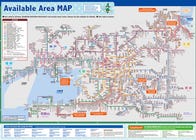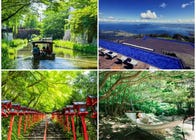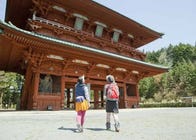
Everything You Need to Know About the Kansai Railway Pass
- Written by: James Davies
Learn essential information for evaluating the Kansai Railway Pass for your visit to central Japan.
(Main image: Klook)
Home to some of Japan’s most captivating cities, the region of Kansai also features a wonderful array of culture, history, and spectacular scenery.
Alongside some of Japan’s most famous attractions, such as the free-roaming deer in Nara and the iconic Himeji Castle, head off Kansai’s beaten track and discover bucolic mountain towns and ancient hiking trails waiting to be explored.
Kansai also happens to be one of the best places in Japan to eat. Osaka is known as Japan’s kitchen for good reason, while Kyoto is famous for kaiseki ryori, an exquisite multicourse meal of fine dining. You can also feast on the famous Kobe Wagyu beef, as well as sample the freshest range of seafood that’s caught daily in the seas just off Kansai’s shoreline.
One of the best ways to explore the region is with the Kansai Railway Pass.
The Kansai Railway Pass allows passengers to travel across six of the region’s prefectures via a network of different train lines, giving easy access to the majority of the region’s most popular cities and attractions.
Kansai Railway Pass Types & Prices
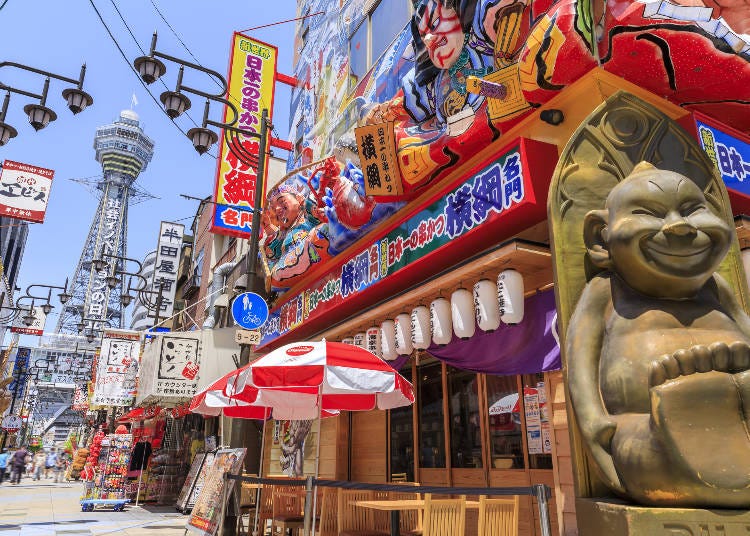
Available as either a two-day or three-day pass, the Kansai Railway Pass covers unlimited rail travel on twenty private railway lines within the Kansai region.
The full list of train lines covered by the Kansai Rail Pass is: Eizan Railway, Hankai Tramway, Hankyu Railway, Hanshin Electric Railway, Hieizan Sakamoto Cable, Keihan Electric Railway, Kinki Nippon Railway, Kita-Osaka Kyuko Railway, Kobe Electric Railway, Kobe Kosoku Line, Kobe Municipal Subway, Kyoto Municipal Subway, Mizuma Railway, Nankai Electric Railway, Nose Electric Railway, Osaka Metro, Osaka Monorail, Port Liner/Rokko Liner, Sanyo Electric Railway, Semboku Rapid Railway.
There are also several cable cars in various parts of Kansai that are also covered by the Kansai Railway Pass. However, be aware that the Kansai Railway Pass does not include travel on any JR Railways train lines.
A full map of all of the train lines covered by the Kansai Railway Pass can be found on the official website (PDF).
Comparing the Costs of the Two Types of Kansai Railway Pass
The Kansai Railway Pass is available as either a two-day or three-day pass. Here is a simple breakdown of the cost of the two different passes.
- Kansai Railway Pass - 2 Day Pass
- ・Cost for Adults: 5,600 yen
・Cost for Children: 2,800 yen
- Kansai Railway Pass - 3 Day Pass
- ・Cost for Adults: 7,000 yen
・Cost for Children: 3,500 yen
Who Might Benefit the Most from the Kansai Railway Pass?
The Kansai Railway Pass will most benefit those who are passing through the region as part of a longer trip in Japan. If you’re planning on spending a few days seeing some of Kansai’s major cities or attractions whilst touring Japan, the Kansai Railway Pass will be the perfect way to explore the region while saving you money.
Where to Buy the Kansai Railway Pass
The Kansai Railway Pass can be bought online from travel agents such as Klook and kkday.
Once you’ve purchased the pass you will be sent a QR code by email. You will need this QR code to collect the Kansai Railway Pass, which can be picked up at several locations in the region, including Kansai International Airport, the Kansai Tourist Information Center in Kyoto and Umeda or Tennoji Metro Stations in Osaka.
A full list of collection points is available on the official website here.
Why choose the Kansai Railway Pass?
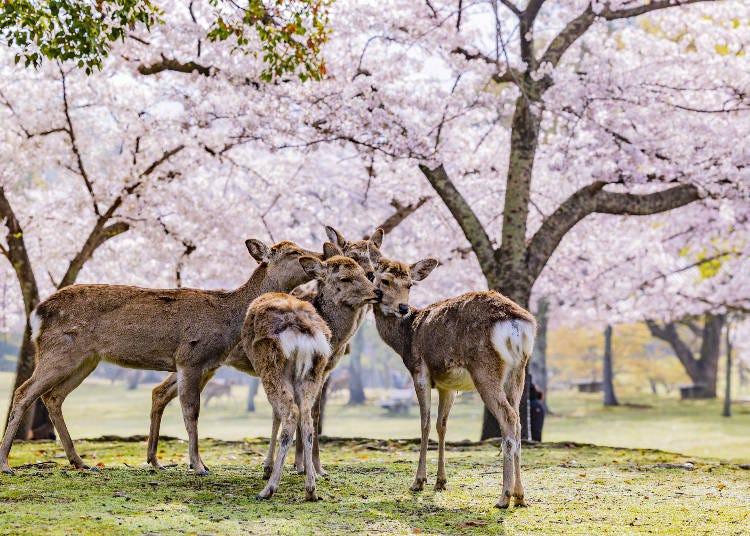
You can easily explore more of Kansai
The Kansai Railway Pass makes it incredibly easy to explore this region of Japan. With unlimited train travel on so many train lines you can easily discover all of the delights of cities like Kyoto, Osaka or Kobe, or head to some of the area’s lesser-visited spots, such as Lake Shiga or the mountains of Wakayama.
Save time and money on travel costs in Japan
The main reason for buying the Kansai Rail Pass is to save money on travel costs. Offering unlimited journeys across many of the region’s train lines also means that the more journeys you take using the Kansai Railway Pass, the more money you will save. Compared to the cost of buying several single tickets to various destinations across the region, the Kansai Railway Pass will be much more cost-effective.
Only having to buy one single ticket will also save you a lot of precious time. With no need to queue up to buy tickets each time you want to get from A to B you can spend more time exploring the wonders of Kansai.
Enjoy discounts on entrance fees and shopping
The Kansai Railway Pass also offers small discounts to a number of attractions throughout Kansai, as well as money off shopping in certain stores. With the pass, you can get a discount on the cost of entry to many of Kansai’s major attractions, such as the Umeda Sky Building’s Kuchu Teien Observatory, plus you’re also entitled to discounts on qualifying purchases in major stores such as BicCamera and Don Quijote.
Potential drawbacks of the Kansai Railway Pass
The Pass Does Not Cover Travel on Any JR trains
The main downside of the Kansai Railway Pass is that it does not include travel on any trains operated by Japan Railways (JR). JR runs several services throughout Kansai, including the Shinkansen. If you need to use any services operated by JR while visiting Kansai, you will need to pay for these separately.
Not Valid For Buses
The Kansai Railway Pass was introduced in April 2024 to replace the Kansai Thru Pass, a previous travel pass that allowed travelers to use many bus services within the region. However, this has been replaced by the Kansai Railway Pass, which only allows travel by train in the region, excluding JR services.
A 2 or 3 Day Pass Might Not Be Long Enough For Some Travelers
Some visitors might find that the option of a 2 or a 3-day pass may give little time to travel across such a large area as Kansai, where there is so much to explore. This might be the case if you are planning on staying in Kansai for an extended period of time, such as a week or more.
One possible solution might be to buy more than one Kansai Railway Pass during your trip. For example, you could purchase a second 3 day Kansai Railway Pass once the first has expired. Depending on your travel plans this may work out as a more cost effective way of traveling around the region.
A Slightly Longer Travel Time Between Kyoto and Osaka
If you plan to use the Kansai Rail Pass to travel directly between Kyoto and Osaka you’ll have to take the Keihan Main Line. The journey takes around 55 minutes and is by a regular commuter train. While this may not be a major issue, compared to the 30 minute journey between Kyoto Station and Shin-Osaka Station on the Shinkansen this may feel like a bit of a downgrade.
Main sights to see with the Kansai Railway Pass
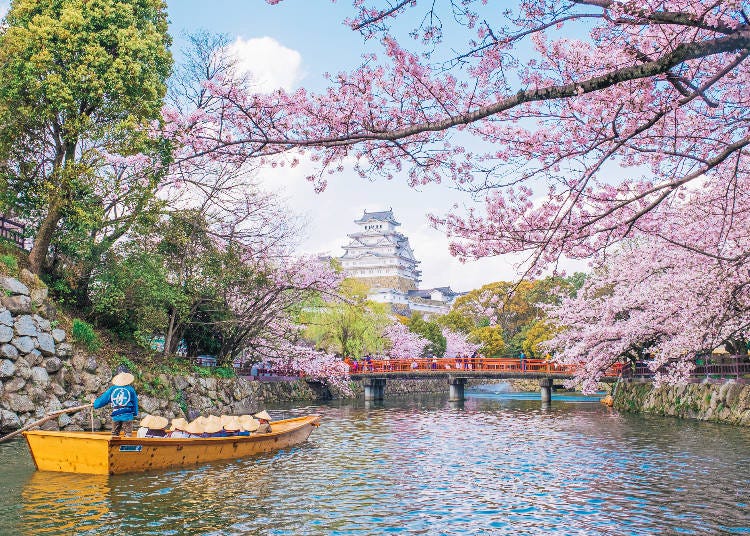
The Kansai Railway Pass can be used to reach many of the region’s most famous tourist attractions as well as plenty of Japan’s hidden gems. Here are a few of the places that you could visit with the Kansai Railway Pass:
Kyoto: The Kansai Railway Pass includes travel on many of Kyoto’s local railway lines, including the subway, making it easy to visit all of the former capital’s biggest attractions, including the famous Gion geisha district, Kiyomizu-dera Temple, Fushimi Inari Shrine, Nijo Castle, and the Arashiyama Bamboo Forest.
Osaka: Similarly, the Kansai Railway Pass can also be used on Osaka’s Metro lines and several local rail lines. With the pass, you can travel easily between Osaka’s major sights, such as Osaka Castle, the iconic Tsutenkaku Tower, the Kuromon Market, Osaka Aquarium Kaiyukan, and dazzling Dotonbori.
Kobe: The port city of Kobe can also be easily explored using the Kansai Railway Pass. You can take in the views of the city from the Kobe Port Tower or the Kobe Nunobiki Herb Gardens & Ropeway, discover the historic areas of Kitano-cho and Nankin-machi Chinatown, and admire the beauty of Sorakuen, a traditional Japanese garden. This is also the best place to sample Kobe’s famous Wagyu beef.
Uji City: The city of Uji is the tea capital of Japan and definitely worth visiting for those who love green tea. Only 30 minutes by train from Nara, Uji features century-old tea houses, shops, restaurants, and shrines lining both sides of the Uji River. Other highlights in Uji include the Byodoin Temple, Ujigami Shrine, and the Nintendo Museum.
Nara: Nara is one of the most popular Osaka and Kyoto day trip destinations for visitors to Japan, thanks in part to the 1,200 or so deer who freely roam around Nara Park. As one of Japan’s former capitals, Nara Park also features many grand and historic temples and shrines, including Todaiji Temple, Horyuji Temple, and the colorful Kasuga Taisha Shrine, as well as the Nara National Museum.
Himeji: Himeji’s biggest attraction is easily the stunning Himeji Castle which still towers over the center of the city. A UNESCO World Heritage site that dates from the early 17th century, Himeji Castle is the best preserved castle in Japan and is easily one of the country’s most spectacular landmarks.
Wakayama: The city of Wakayama sits on the Kii Peninsula, around an hour south of Osaka by train. The city is centered around the rebuilt Wakayama Castle, which was originally built as a fortress to protect western Japan in the late 16th century. Within the castle grounds is Momijidani Teien Garden, a gorgeous Japanese garden, while the Museum of Modern Art features works by famous artists such as Pablo Picasso and Mark Rothko.
Koyasan: Located high in the mountains of Wakayama Prefecture, the town of Koyasan has been the center of a sect of Buddhism called Shingon Buddhism for over 1,000 years. Part of the ancient Kumano Kodo pilgrimage trail, Mt. Koya is lined with many ancient temples and shrines, as well as the atmospheric mountain cemetery at Okunoin Temple. Koyasan is also the best place in Japan to enjoy the unique experience of an overnight stay in a Buddhist temple.
Top Tip: You can use the Kansai Railway Pass to get to or from Kansai International Airport, as well as the Shinkansen stations at Kyoto, Osaka, Kobe and Himeji. If you’re traveling to another part of Japan or flying home after visiting Kansai, you could use the Kansai Railway Pass for one last journey before moving on.
Practical Information About the Kansai Railway Pass
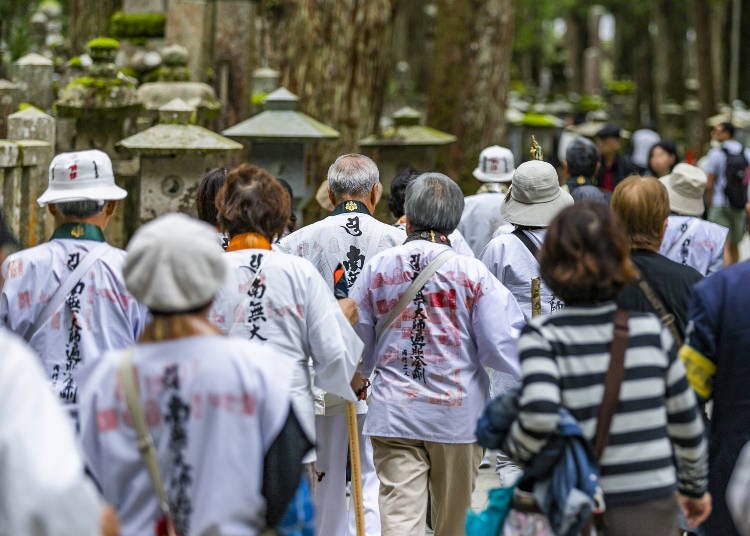
Who can buy a Kansai Railway Pass?
The Kansai Railway Pass can only be bought by the following types of travelers.
- Overseas tourists visiting Japan on a temporary visitor visa;
- Japanese citizens who live overseas with permanent residence in another country;
- Anybody who is traveling with either of the above - in this instance this ticket must be bought together with those of their travel companions
How long is the Kansai Railway Pass valid for?
The Kansai Railway Pass is currently scheduled to be on sale from March 1, 2024 until March 31, 2025 and will be valid for use from April 1, 2024 until May 31, 2025. Any Kansai Railway Pass bought before March 31, 2025 has to be used before May 31, 2025.
How do I use the Kansai Railway Pass?
The Kansai Rail Pass is a physical ticket that needs to be passed through the ticket readers at the barriers at train stations. Smaller train stations in more remote areas still don’t have ticket machines, so at these you would simply need to show the ticket to a station attendant who will wave you through.
How do I activate the Kansai Railway Pass?
The pass is activated by passing it through the ticket barrier at any station. This imprints the date onto the back of the card. The card is then valid for travel for the rest of that day.
Do I have to use the pass on consecutive days?
No - A great advantage of the Kansai Railway Pass is that it does not have to be used over consecutive days, unlike many other passes. For example, if you plan on spending a week in Kansai, you could use a three day Kansai Railway Pass for train journeys on the Monday, Wednesday and Saturday.
Alternatives to the Kansai Railway Pass

Visitors who intend to rely more on Japan may wish to consider the following alternatives to the Kansai Railway Pass.
- JR West Kansai Area Pass - This pass offers unlimited travel on local JR trains and buses in Kansai, as well as the Kyoto City Subway, the Keihan Railway and Hankyu Railway lines. Available as a 1, 2, 3 or 4 day pass, this does not include travel on bullet trains. The JR West Kansai Area Pass covers a very similar area to the Kansai Railway Pass. See here for details & bookings.
- JR Kansai WIDE Area Pass - Similar to the JR West Kansai Area Pass, this 5 day pass offers unlimited train travel on JR trains across a larger area of Kansai, as well as to some neighboring areas, including Tottori, Okayama and Takamatsu. See here for details & bookings.
Conclusion - Save Time and Money with the Kansai Rail Pass
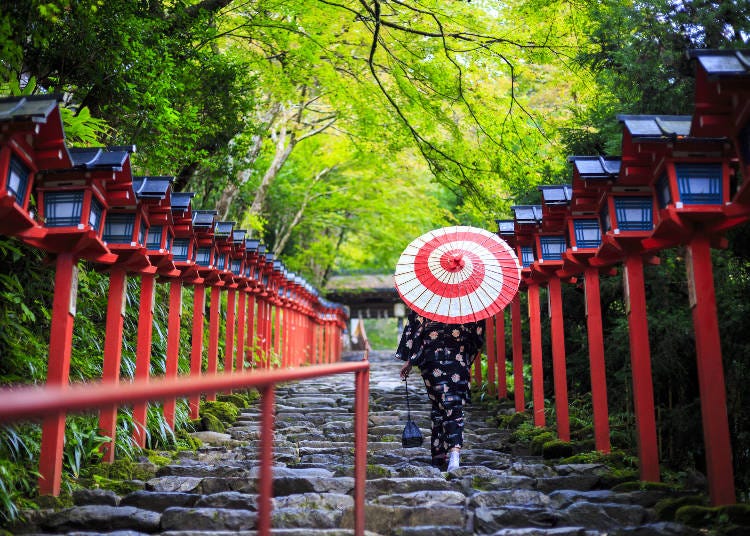
With so many wonderful places to discover, the Kansai Railway Pass can be a great option for those looking to get the most out of traveling around one of the most fascinating regions of Japan. Whether you decide to choose the 2-day or 3-day option, with unlimited travel on 20 regional train lines, the Kansai Railway Pass is also a smart way to save time and money whilst visiting Japan.
For Kansai Rail Pass pass details, see the official website (https://www.surutto.com/kansai_rw/en/).
Originally from Cardiff in the UK, James has been working as a freelance writer since moving to Japan in 2020. Having first visited Japan in 2013, James has been to each of the country’s 47 prefectures. A lover of sushi, sumo and sake, when not writing, he is either exploring Tokyo or planning a trip to a new corner of Japan.
*Prices and options mentioned are subject to change.
*Unless stated otherwise, all prices include tax.
Popular Tours & Activitiess
Recommended places for you
-

Jukuseiniku-to Namamottsuarera Nikubaru Italian Nikutaria Sannomiya
Izakaya
Kobe, Sannomiya, Kitano
-

Kambei Sannomiyahonten
Yakiniku
Kobe, Sannomiya, Kitano
-

Tenryu-ji Temple
Temples
Arashiyama, Uzumasa
-

Kanzenkoshitsuyakinikutabehodai Gyugyu Paradise Sannomiya
Yakiniku
Kobe, Sannomiya, Kitano
-

ISHIDAYA Hanare
Yakiniku
Kobe, Sannomiya, Kitano
-
Goods

Yoshida Gennojo-Roho Kyoto Buddhist Altars
Gift Shops
Nijo Castle, Kyoto Imperial Palace
-
Ad

Discover Timeless Beauty: Kimono-en, a Web Magazine Exploring the Spirit of Kimono
-

Kyoto's Hidden Treasures Open This Winter! Enjoy Exclusive Access to 15 Rare Cultural Sites (Jan-Mar 2026)
by: Guest Contributor
-

November Events in Kansai: Fun Festivals, Food, and Things to Do in Kyoto & Osaka
-
Ad

Café Bahnhof in Osaka: The home-roasted coffee that captivated G20 leaders!
-
Ad

Experiencing Manga as Culture, Not Just Reading It: Expo 2025 with Rumiko Takahashi
-

Everything You Need to Know About teamLab Biovortex Kyoto (2025 Insider Guide)
by: Wemmy Chau
Inspiration for Accommodations
-

Spacious Family Hotel in Namba: 20 Comfortable Stays for Family Fun
-

Charming Hotels to Enjoy the Spectacular Views of Arashiyama's Autumn Leaves from Your Room
-

Experience Stunning Views of Osaka Castle from Private Spaces: Top Hotels Near Osaka Castle
-

Recommended by Visitors! Arashiyama's Best-Rated Hotels
-

Family-Friendly Universal Studios Japan Hotel with Excellent Access
-

Enjoy a Comfortable Stay in Osaka! 10 Hotels with Convenient Airport Shuttle Services
-

Top 10 Recommended Hotels Near Namba Station with Great Access
-

Enjoy Night Views from Your Room! Recommended Hotels in Namba Area
-

Exploring Hidden Japan at Hozenji Yokocho: Wandering Around Osaka's Cool Maze of Alleys
by: WESTPLAN
-

5 Popular Things to do in Umeda - Osaka's Central Area!
by: WESTPLAN
-

Where to Buy Kimono in Kyoto: Best 4 Stylish Antique Kimono Shops on Sanjo and Shijo Streets
-

Easy Japanese Potato Croquettes (Korokke) Recipe: Enjoy Soft Flaky Potatoes, Ground Beef, and a Tangy Sauce! (Video)
-

The Complete Guide to the Kintetsu Rail Pass
by: James Davies
-

Complete Guide to Buying Japanese Medicine in Japan: Phrases and Vocabulary You Need to Know
- #best gourmet Osaka
- #things to do Osaka
- #what to do in kyoto
- #what to bring to japan
- #best gourmet Kyoto
- #new years in Osaka
- #what to buy in nanba
- #Visiting Osaka
- #onsen tattoo friendly arima
- #daiso
- #Visiting Kyoto
- #best japanese soft drinks
- #japanese fashion culture
- #japanese convenience store snacks
- #japanese nail trends













